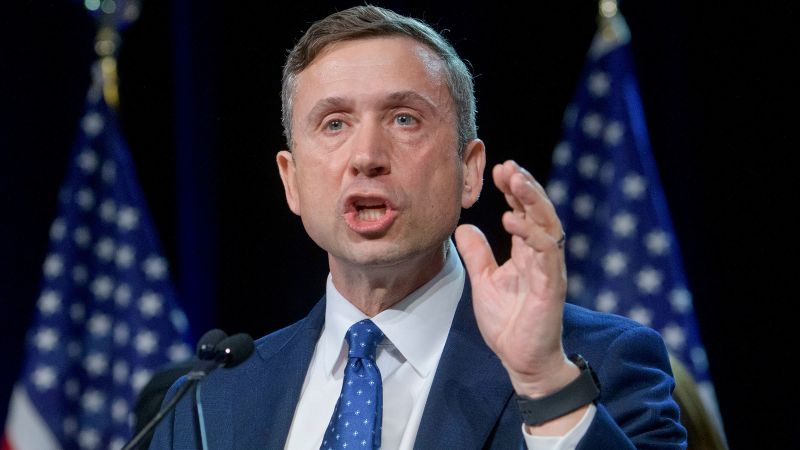The current financial landscape of the Democratic National Committee (DNC) presents a stark contrast to that of the Republican National Committee (RNC). Recent campaign reports reveal that the RNC boasts a staggering $72.4 million in cash reserves as of June, which is nearly five times higher than the DNC’s mere $15 million. This financial disparity highlights the challenges facing the DNC, particularly under the leadership of its chairman, Ken Martin, as both parties prepare for crucial gubernatorial races in the upcoming fall and the more consequential midterm elections for Congress next year.
The situation is further complicated by Martin’s leadership, which has faced considerable scrutiny in recent months. A tumultuous period within the party, characterized by a public split with former vice chair David Hogg, has exacerbated the existing financial constraints. Reports indicate that the DNC is contemplating the need for a line of credit, an unwelcomed sign of fiscal distress that was first revealed by The New York Times. The effective management of party funds is critical as they gear up for competitive races against a Republican counterpart that currently holds all significant power within the federal government.
The recent resignation of Hogg, alongside two prominent union leaders who have long been involved with the DNC, underscores the internal strife that has plagued the committee. These departures point to underlying issues in leadership communication and strategy that are only detrimental to the party’s overall fundraising efforts. Democratic fundraisers voiced serious concerns to CNN, indicating that the party’s hurdles are hindered by a lack of clear messaging. During a crucial time when Democrats must counter not only the messaging from President Donald Trump but also the advantages the Republicans hold, the DNC appears to be lagging.
DNC members are now facing the pressing need to revitalize their messaging strategy to invigorate fundraising efforts. Clarity of message has proven fundamental in appealing to potential donors, and sentiments among members emphasize a need for aggressive outreach. One current member pointed out the difficulty of requesting funds without a cohesive, immediately actionable pitch that resonates with potential supporters. It begs the question of the DNC’s marketing identity and whether they can establish a constructive image that attracts financial contributions.
Changes in leadership within the DNC, however, are unlikely. Martin enjoys considerable support among key players in the party, particularly state party chairs who constitute a significant portion of the DNC membership. Despite criticisms surrounding fundraising failures and a lack of unified messaging, his deep-rooted connections within the party help bolster his standing. The DNC has pointed to its performance relative to the same period in previous years, indicating retention of robust funding flows primarily through small-scale donations as evidence of grassroots support for their agenda.
Recent statistics highlight that an impressive 65% of the DNC’s contributions from individual donors amount to $200 or less, distinctly contrasting with the RNC’s 47%. This reliance on small-dollar contributions signals a grassroots backing which, while indicative of public support, may not offer the financial muscle necessary to compete effectively against the Republicans.
In the face of internal challenges, including intraparty feuding and the recent resignations, party insiders insist that the chief goal remains winning elections. This focus has undeniably yielded some success in local contests, where Democrats have excelled in over 30 of the races and managed to flip several Republican-held seats. Martin’s diligent efforts in these campaigns, particularly the notable support he has garnered from state party leaders, have begun to yield some positive outcomes.
However, observers note that even as Martin attempts to maintain focus amid distractions, the prerequisite for solid party messaging and structural effectiveness is increased fundraising prowess. While acknowledging the turmoil affecting his role, Martin remains optimistic about the DNC’s trajectory and asserts that sustaining a unified party remains paramount.
Nonetheless, sentiment amongst party members indicates some frustration regarding donor behavior in light of past electoral defeats. Maria Cardona, a long-standing DNC member, recognizes the ongoing hesitance among donors but remains confident they will reengage with the party, a reassurance echoed by others reflecting on the cyclical nature of political fundraising. The road ahead for the DNC will require a strategic refocus on messaging, unity, and financial stability to contend with the formidable Republican opposition effectively.



